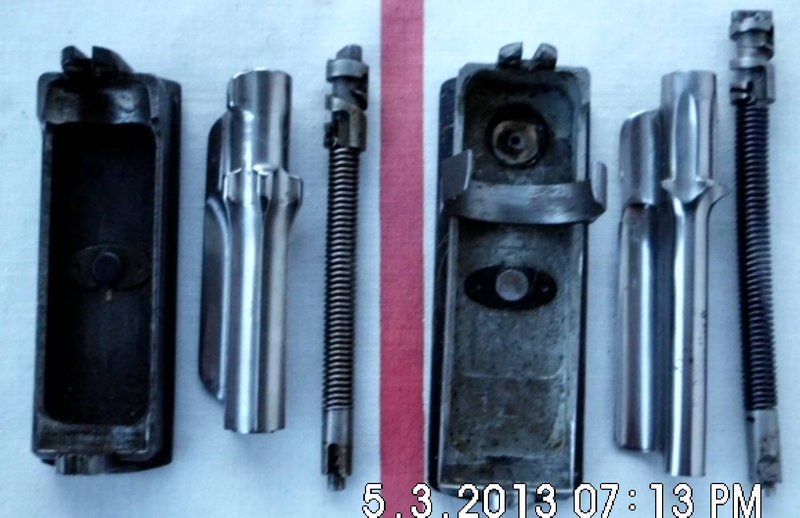Hammergun said:
↑
A common problem in 1903's with Privi ammo. Mine does it too.
On another forum a poster said that the 1903 is very sensitive to over all length of the cartridge. He stated the Privi is a bit shorter than spec and this causes the problem. I just polished the feed ramp and work the bolt smartly and they feed good enough.
Aaaahhh.... I see. That makes sense to me. I have a friend who reloads during the winter up here, and I think I will try and find a set of reloading dies, then talk him into loading some proper length ammo for me. I thank you for your information Hammergun.
Just on a side note; Do you happen to know if Prvi Partisan brass make for good reloads?
This has been discussed at length on NitroExpressForums.
The Schoenauer magazine works much the same as a roller bearing. The cartridges themselves act as the 'pin bearings', the walls of the magazine well as the outer race which maintains the proper clearance between cartridge and the 'star' rotor while the cartridges make their rotational journey around the spool's center.
The shape of the cartridge nose and overall length are crucial to maintaining clearance without binding, as the cartridge will become 'jacked' if too short or too narrow about 1/3 back from the tip as it falls into a void.
Here are (6.5X54) cartridges in a Schoenauer magazine, out of the firearm for display. Normally the magazine would only have cartridges loaded while in the arm, as otherwise there is nothing to hold them in place. When loaded (from above, best when aided with a 'stripper clip'), you can see how they are guided by the magazine well and the machined areas at the front and rear of the magazine's lower housing (below).
Note how the tip will fall into a void if too short or narrow. There is little to prevent a cartridge that is too short from shifting fore and aft.
Magazine housing (viewed from above. spool removed). Note the machined areas to guide cartridges by the nose (left) and the base (right).
Here are some 'prewar' MS magazines:
At left is an M1903, at right an M1924. A ring was added to the M1924 and subsequent MS of prewar manufacture ('High Velocity' in the '39 Stoeger) and throughout postwar production. The ring eliminated the need for such careful feeding, as they held the cartridges at proper clearance and alignment at the shoulder. To ensure smooth and effortless feeding of the M1903 (6.5X54), M1905 (9X56), M1908 (8X56), or M1910 (9.5X57), obtain or load cartridges as close as possible to the original DWM or Eley specifications.
Make them like this, they'll feed smoother than snot:
My advice is to have your reloader build you five 'dummy' rounds to the exact length, bullet shape, and overall profile as the Eley drawing above (or acquire some original DWM 477*) and work them through your magazine (you will be impressed!). That will show you how flawlessly the magazine functions with proper fitting cartridges and give you a baseline to work other profiles from. The most critical thing is to have enough 'meat' about 1/3 back from the bullet tip and keep them long enough. *I wouldn't recommend firing vintage DWM, as it would almost certainly be loaded with Cordite and corrosive primers.
Also, Qual - Cart (Quality Cartridge) makes properly headstamped MS brass at a reasonable price.
Enjoy!




















